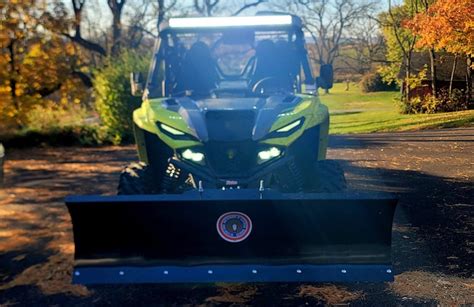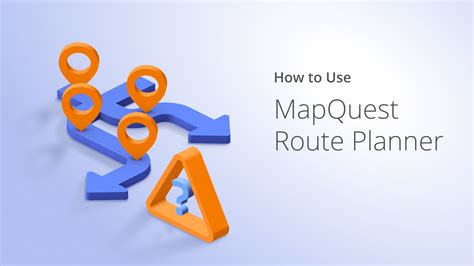Best Equipment For Snow Removal Business

The Ultimate Guide to Outfitting Your Snow Removal Business

In the world of snow removal, having the right equipment can make all the difference between a successful business and one that struggles to keep up. Whether you're a seasoned professional or just starting out, investing in top-quality gear is crucial for efficiency, safety, and customer satisfaction. This guide will walk you through the must-have tools and equipment to build a thriving snow removal business.
Essential Tools for Effective Snow Removal

When it comes to snow removal, efficiency is key. The right tools can significantly reduce the time and effort required to clear snow, ensuring you can serve more clients and provide faster service. Here's a comprehensive list of the essential equipment for your snow removal business.
Snow Blowers: The Workhorse of Winter
Snow blowers are the backbone of any snow removal operation. These powerful machines come in various sizes and types, catering to different needs. For residential properties, single-stage snow blowers are often sufficient. These lightweight machines use an auger to gather snow and throw it out of the chute. They're ideal for light to moderate snowfall and can handle depths of up to 12 inches.
For commercial or larger-scale operations, two-stage snow blowers are a better choice. These heavy-duty machines feature an impeller that throws snow out of the chute at high speeds, making them suitable for deeper snow and larger areas. They're also more efficient, clearing a wider path with each pass.
When selecting a snow blower, consider factors like the average snowfall in your area, the size of the properties you'll be servicing, and the frequency of snow removal tasks. Some popular brands include Ariens, Honda, and Cub Cadet, known for their reliability and performance.
Snow Plows: Clearing the Way
Snow plows are indispensable for tackling large areas quickly and efficiently. These attachments are typically mounted on trucks or SUVs, allowing you to clear snow from driveways, parking lots, and roads. They come in various sizes and styles, including straight blades, v-blades, and box plows.
Straight blades are versatile and suitable for a range of conditions. They're effective for pushing snow straight ahead and can be used for both residential and commercial jobs. V-blades, on the other hand, are excellent for maneuvering around obstacles and are ideal for tight spaces or areas with heavy snowfall.
Box plows, also known as push plows, are powerful tools for clearing large, open areas. They're typically used for commercial jobs and can handle significant snowfall. When choosing a snow plow, consider the size and type of vehicles in your fleet, the average snowfall in your region, and the specific needs of your clients.
Snow Shovels and Pushers: Manual Labor with a Twist
While snow blowers and plows are essential, sometimes manual labor is still necessary. Snow shovels and pushers are designed to make this task easier and more efficient.
Ergonomic snow shovels with curved handles and non-slip grips reduce the strain on your back and arms, allowing you to work longer without fatigue. Look for shovels with lightweight materials like aluminum or plastic, which make the job less physically demanding.
Snow pushers, or snow scoops, are another useful tool. They're designed to push snow rather than lift it, reducing the risk of injury and making the job faster. These tools are particularly useful for clearing sidewalks, walkways, and other areas where a snow blower or plow might not be practical.
Salt and Ice Melt: Fighting the Frost
Dealing with icy conditions is a critical aspect of snow removal. Salt and ice melt products are essential for preventing slips and falls and keeping surfaces safe.
Rock salt is a traditional and cost-effective option for melting ice. However, it can be corrosive and harmful to plants and concrete. For environmentally friendly alternatives, consider calcium chloride or magnesium chloride. These products are less harmful to surfaces and vegetation but may be more expensive.
When choosing an ice melt product, consider factors like the average temperature in your area, the surface types you'll be working with, and the potential environmental impact. Always follow the recommended application rates to ensure effectiveness and safety.
Safety Gear: Protecting Your Most Valuable Asset
In the snow removal business, safety is paramount. Investing in quality safety gear is crucial to protect yourself and your team from injuries and accidents.
High-visibility clothing, such as vests and jackets, ensures that you're visible to drivers and pedestrians, reducing the risk of accidents. Reflective tape and bright colors are essential for working in low-light conditions.
Warm and waterproof clothing is also a must. Snow pants, jackets, and insulated boots keep you dry and comfortable, even in harsh winter conditions. Gloves with grippy palms and waterproof materials are ideal for handling equipment and shoveling.
Don't forget eye and head protection. Safety goggles protect your eyes from flying debris, and a hard hat is essential when operating machinery or working near heavy equipment.
Storage and Transportation: Keeping It Organized
Efficient storage and transportation are key to a well-organized snow removal business. Having a dedicated space to store your equipment and a reliable method of transporting it to job sites is essential.
Consider investing in a storage shed or garage to keep your equipment protected from the elements. This not only extends the lifespan of your gear but also makes it easier to access and organize. Ensure the space is well-ventilated and has enough room for all your tools and machines.
For transportation, a reliable truck or SUV is a must. Look for vehicles with ample cargo space and the ability to handle rugged winter conditions. Consider adding a trailer to your fleet for larger equipment or for transporting multiple tools to a job site.
Maximizing Efficiency and Productivity
Having the right equipment is just the first step. To truly maximize your snow removal business's efficiency and productivity, consider these additional tips and strategies.
Investing in Quality over Quantity
While it may be tempting to purchase the cheapest equipment, investing in high-quality tools and machines will pay off in the long run. Well-built equipment is more durable, requires less maintenance, and often performs better. This can translate to fewer repairs, less downtime, and higher customer satisfaction.
Regular Maintenance and Upkeep
Proper maintenance is crucial to keeping your equipment in top shape. Follow the manufacturer's guidelines for maintenance and service intervals. Regularly inspect your gear for wear and tear, and address any issues promptly. Keep a well-stocked toolbox with essential supplies and spare parts to handle minor repairs on the go.
Training and Education
Investing in your team's training and education is essential for a successful snow removal business. Ensure your employees are well-versed in the safe and efficient use of all equipment. Provide ongoing training and educational resources to keep them up-to-date with the latest techniques and best practices.
Utilizing Technology for Efficiency
Technology can play a significant role in streamlining your snow removal operations. Consider investing in GPS tracking for your vehicles to optimize routes and ensure timely arrivals. Weather tracking apps and software can help you stay ahead of storms and plan your operations effectively.
Additionally, consider using job management software to streamline scheduling, billing, and communication with clients. This can save time and reduce administrative overhead, allowing you to focus on delivering exceptional service.
Staying Ahead of the Competition
In a competitive industry like snow removal, staying ahead of the curve is crucial. Here are some strategies to help you stand out and maintain a thriving business.
Diversifying Your Services
While snow removal is your core business, consider expanding your services to include other seasonal tasks. Offering services like leaf removal, lawn care, and landscaping can provide a steady income stream throughout the year and keep your team busy during the off-season.
Building Strong Client Relationships
In the snow removal business, customer satisfaction is key. Focus on building strong relationships with your clients by delivering exceptional service and going the extra mile. Respond promptly to their needs, provide transparent pricing, and offer personalized solutions.
Consider offering value-added services like snow fencing or ice dam prevention. These additional services can set you apart from competitors and create a unique selling point for your business.
Staying Up-to-Date with Industry Trends
The snow removal industry is constantly evolving, with new technologies and best practices emerging regularly. Stay informed by attending industry events, joining professional organizations, and networking with peers. Keep an eye on emerging trends and be willing to adapt and innovate.
Conclusion

Building a successful snow removal business requires a combination of the right equipment, efficient strategies, and a commitment to excellence. By investing in top-quality tools, prioritizing safety and training, and staying ahead of the competition, you can establish a thriving and sustainable business. Remember, in the snow removal industry, preparation and proactive planning are key to success.
How often should I service my snow removal equipment?
+Regular maintenance is crucial for the longevity of your equipment. Follow the manufacturer’s guidelines for service intervals, typically ranging from monthly to annually. Regular inspections and prompt repairs will keep your gear in top shape.
What’s the best snow blower for residential use?
+For residential properties, single-stage snow blowers are often ideal. Brands like Ariens and Honda offer reliable and efficient models. Consider factors like average snowfall, driveway width, and budget when making your choice.
How can I choose the right snow plow for my truck?
+When selecting a snow plow, consider the size and type of your truck, the average snowfall in your area, and the specific needs of your clients. Straight blades are versatile, while v-blades are great for tight spaces. Box plows are powerful for heavy snowfall.
What safety gear is essential for snow removal workers?
+High-visibility clothing, warm and waterproof gear, safety goggles, and hard hats are essential. These items protect workers from accidents, keep them visible, and ensure comfort and safety in harsh winter conditions.
How can I stay ahead of the competition in the snow removal business?
+Diversify your services to include other seasonal tasks, build strong client relationships, and stay up-to-date with industry trends. Offering additional services and providing exceptional customer service can set you apart from competitors.


